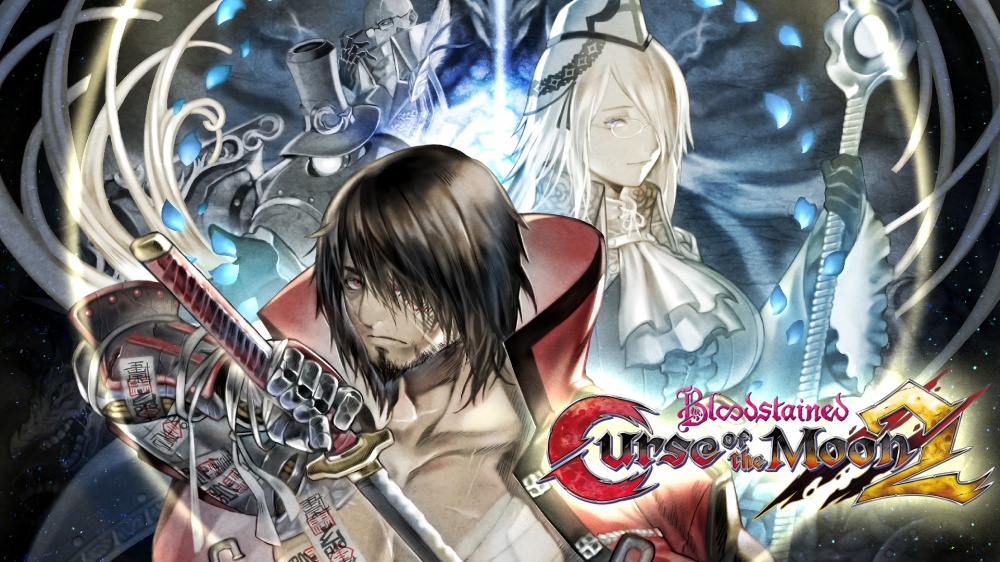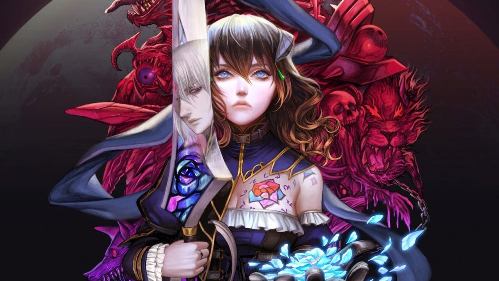
Bloodstained: Ritual of the Night is a spiritual successor to Castlevania: Symphony of the Night; both being produced by Koji Igarashi. Both titles feel similar in tone and gameplay but Ritual of the Night establishes its own identity and is worth a look for both old and new fans alike.
Taking place in the 19th Century, the game introduces players to Miriam. Miriam was an orphan taken in by the Alchemists Guild and turned into a Shardbinder- a being that is able to absorb demonic-powered crystals into their body and gain special powers. Ten years prior to the events of the game, Miriam is in a coma when the Guild summons demons as a scare tactic to bring people back to their Church. This backfires however and the demons cause uncontrollable destruction. Fast forward to the start of the game; Miriam awakens from her slumber and is told of the devastation and that the demon army is being led by none other than her childhood friend, Gebel. She resolves to fight back and put a stop to the threat against humanity.
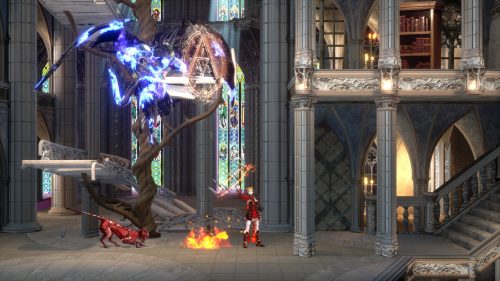
Much like Castlevania, Bloodstained: Ritual of the Night sees players explore Gabel’s castle. You progress from room to room, killing anything in sight and picking up items that can later be sold or used to enhance Miriam’s abilities. Often rooms will split into multiple pathways, giving you a degree of freedom in how you explore. Not all areas are accessible initially – you will have to unlock Miriam’s abilities to progress further. An early ability Miriam obtains, for example, is a double jump which lets her reach higher places. Another ability lets Miriam summon a giant hand that can move large objects to unblock pathways. At times it can be confusing where you’re supposed to go next and what ability is required, which leads to painstakingly backtracking until you stumble across the right path. This is slightly mitigated thanks to teleportation rooms which allow for fast travel throughout the castle.
The castle itself is full of unique areas to explore. To name a few there is a library, courtyard, factory, laboratory and even a section where you ride a moving train. Each area also has its own set of enemies, though a few are just colour variants of those fought in earlier sections. There are various demons, harpies, bats, giant animal heads, archers, venus flytrap-like plants, flying pigs, fairies, poltergeists, witches than can curse you and many, many more enemies to overcome. The main highlight though are the boss battles which put your reflexes and endurance to the test. Most battles will come down to the tried and true method of analysing attack patterns and responding accordingly, but there are some particularly tricky fights that will have you restarting from your last save point more than once. There’s certainly enough variety to keep Bloodstained: Ritual of the Night feeling fresh and a delight to play throughout its entire campaign.
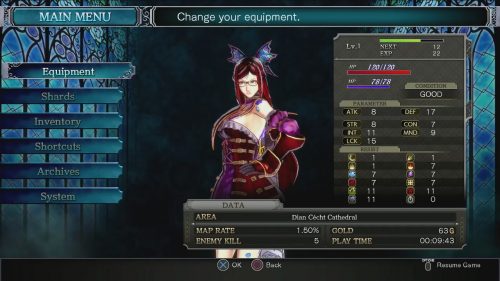
Miriam’s loadout and style are fully customisable as well. You have the usual trope of being able to assign different weapons to her, such as swords, guns, whips and combat shoes, which all suit different play styles. Miriam does a slower, 180 degree swing when attacking with a two handed sword, for example, as opposed to a quicker forward jab when using combat shoes or a single-handed sword. There are also accessories such as stone masks, hats and rings which boost Miriam’s core stats. The accessories will appear on Miriam in-game and later you will also receive the option to change her hair styles and colour. Sometimes it’s worth sacrificing those few defense points to make Miriam shine with style!
Miriam’s Shardbinder abilities play a key role in Bloodstained: Ritual of the Night’s gameplay. When defeating enemies you will be randomly awarded Shards that contain that demon’s power. The Bat enemy’s Shard for instance, will let you summon bats that will swoop to attack foes. Other Shards shoot elemental projectiles, boost Miriam’s stats and even summon a dragon head that breathes fire. One of the more interesting Shard types are those that spawn a familiar who follows Miriam and will point out objects of interest and attack foes. Using Shardbinder abilities does use up your mana meter, but this will regenerate overtime or you can use dropped items to fill it quicker. Shards can be powered up via an alchemy menu, making them even more devastating in combat situations. It’s particularly appealing to discover and add new Shards to your ever growing collection, then for the first time wielding the power each one manifests.
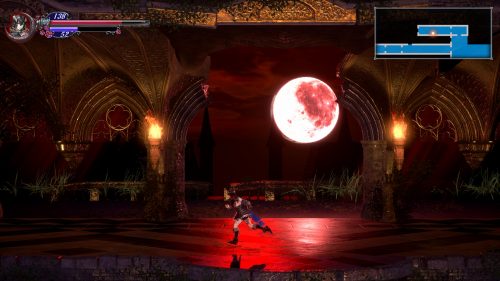
Bloodstained: Ritual of the Night features vibrant 2.5D visuals which pays homage to Castlevania: Symphony of the Night. Of particular note are the backdrops that appear when traveling through hallways between areas; these often showcase a beautiful cloudy night sky with a blood red moon shining through. There are also moments where you will have to navigate spiralling towers and the camera shifts ever so slightly to give a sense of the scale. Again, the game keeps throwing new environments and visuals at you to stay fresh and interesting.
Bloodstained: Ritual of the Night supports both English and Japanese dubs. The English voices are mostly European accents which match the aesthetics of the game. This is accompanied by a wonderfully orchestrated soundtrack that is an absolute joy to listen to.
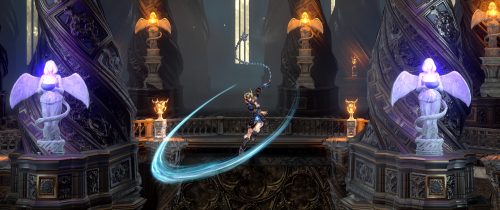
I played the game on a standard PS4 console and while it ran smoothly most of the time, there were noticeable random drops in framerate when fighting enemies or obtaining new Shards. There were a few instances where dialog boxes had missing text and did not match the words characters were speaking, namely in the early stages of the game. I also experienced two random game crashes. These are relatively minor technical issues overall, but they are still present and impact on Bloodstained: Ritual of the Night’s otherwise high quality. The good news is that the developers are well aware of the performance issues (particularly for the Nintendo Switch version) and have promised to release frequent small updates to address these concerns.
Bloodstained: Ritual of the Night is a worthy spiritual successor to Castlevania: Symphony of the Night. The game features many areas to explore and constantly throws new enemies and Shard abilities at players to keep the adventure feeling fresh and interesting. There are some minor technical issues which negatively impact the experience, but otherwise this comes highly recommended for fans of Metroidvania-style games.
- Vibrant 2.5D visuals - Miriam is fully customisable - Great variety of areas to explore and enemies to fight - A worthy spiritual successor to Castlevania: Symphony of the Night
- Can be confusing how to progress to a new area - Various technical issues

